Hydrangea paniculata Magic Sweet Summer - instructions for growing
The ornamental hydrangea Magic Sweet Summer was bred by Dutch breeders in 2006. Due to its attractiveness, it received a silver medal at the plantarium exhibition, Boskoop, Netherlands. Consider what this perennial looks like and how to grow it in the garden.
- general characteristics
- Landing features
- Organization of the place
- Purchase and preparation of planting material
- Planting stages
- Growing rules
- Watering
- Top dressing
- Pruning
- Leaving during flowering
- Resting phase
- Preparing for winter
- Reproduction methods
- Layers
- By dividing the root
- Cuttings
- Diseases and pests
- Landscape use
- Testimonials
- Useful videos
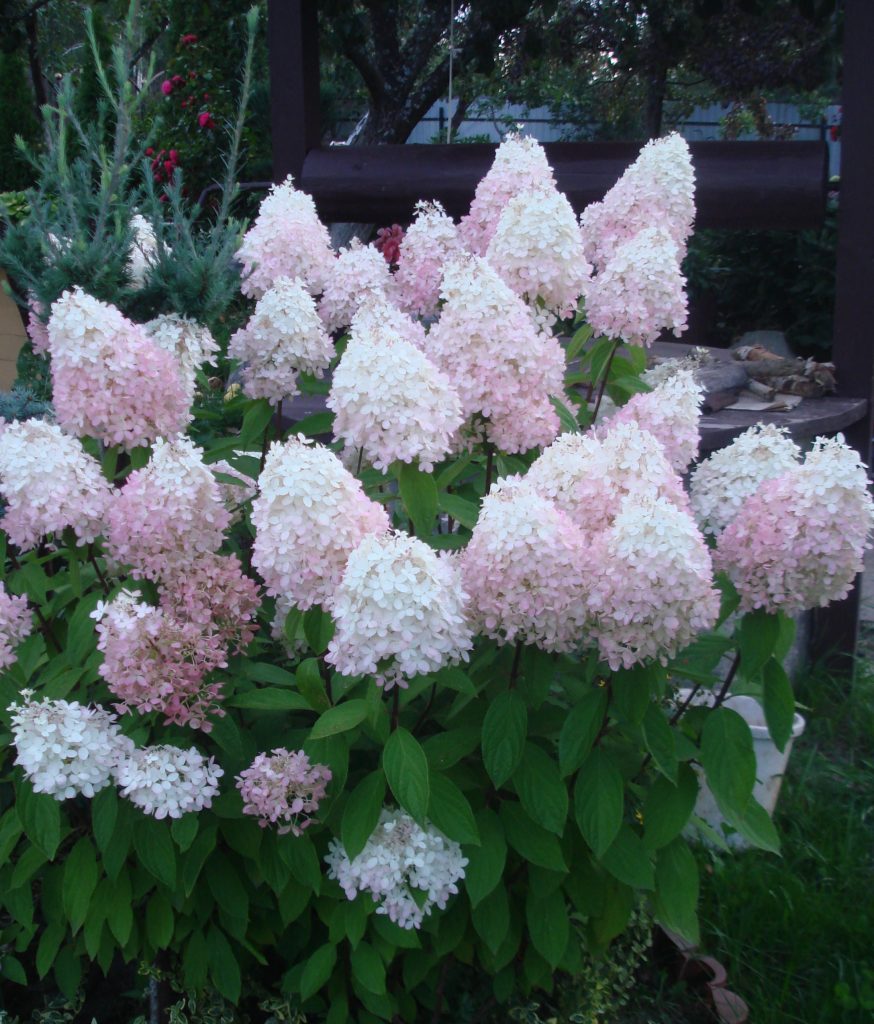
Hydrangea magical suite
general characteristics
Hydrangea is a perennial ornamental plant that belongs to the paniculate species.
The shrub reaches 140-160 cm. The shoots are erect, the lateral ones move to the side, giving the crown a spherical shape.
The inflorescences are large, dense, at the beginning of summer light with a greenish tone, in the middle of the season they are creamy with a pink tint, the shape is cone-shaped or paniculate, the size is 20-25x15-17 cm.
The leaves are green, slightly pubescent, oval-elongated; closer to autumn, they acquire a purple hue.
The botanical name is paniculata magical sweet summer. The variety is prized for its lush and long flowering, which lasts three months - from early July to mid-October.
The second advantage is high frost resistance. The plant easily tolerates a drop in temperature to -30 ° C, therefore it is suitable for cultivation in all regions of our country.
Landing features
The success of growing this shrub depends on adherence to deadlines, planting technology and the right place for keeping.
The best time for planting seedlings is spring, when the last frosts pass, the soil warms up to a temperature of 10-12 ° C. By this time, the plants have not yet had time to awaken, which means they will successfully take root and start growing after planting.
In warm regions (in the south, in the Middle and Central lane), gardeners plant seedlings in early autumn (until September 15). In 1.5-2 months, they manage to adapt and take root before the onset of stable cold weather.
Organization of the place
This plant prefers fertile soil, so the site should be fertilized. First, it is freed from garden debris and last year's vegetation, then sprinkled with humus, black earth - two buckets each. Add 10 kg of sand and peat. Deep digging and leveling are carried out.
To increase the decorative effect and the intensity of the growth of the bushes, a few more ingredients are additionally introduced: potassium sulfate, superphosphate - 30 g each, urea - 20 g. This amount is calculated for 1 m².
Hydrangea Magic Sweet Summer prefers to grow in a shaded area, where there is access to sunlight in the morning and evening. Do not plant seedlings in the shade - their stems will begin to stretch, the leaves will turn pale, and the flowering will be poor. When planted in the sun, foliage and inflorescences will quickly burn.
Purchase and preparation of planting material
You can buy seedlings of this variety in a specialized nursery or store.To increase the survival rate after planting, it is necessary to choose strong and grown plants with a well-branched stem. The optimum height is 50-60 cm.
Carefully inspect all shoots, leaves - they must be whole without mechanical injuries and signs of infection with diseases, pests.
The best planting material is considered to be bushes with an earthen clod or planted in a container. They take root better after transplantation. In addition, when moving into open ground, the root system with the ground is less susceptible to injury.
Planting stages
- First, they pull out holes 50x60 cm in size;
- A little drainage (pebbles or crushed stone) is laid at the bottom;
- Sprinkle on top with a mixture of garden soil and last year's manure (2: 1);
- Sprinkle with a thin layer of garden soil;
- The roots are lowered, straightened, the soil is poured to the top, tamped;
- Two buckets of water are poured under each plant, mulched with peat.
When planting, it is important to properly deepen the stem so that its root collar remains above the soil surface.
If you have several specimens, you should adhere to a certain planting scheme - the distance between seedlings is about 1.5 m, between rows - 1.2 m.
Growing rules
It is not difficult to care for magical sweet summer hydrangea, so every gardener, even a beginner, can grow it.
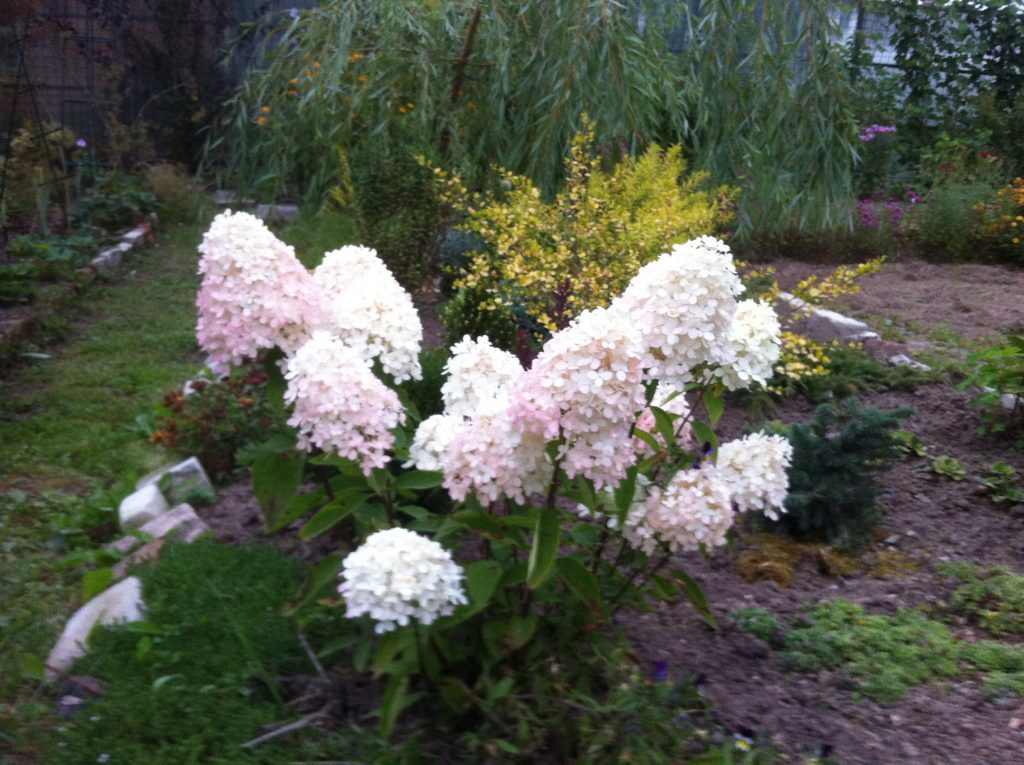
Hydrangea magical sweet summer description
Watering
He loves a lot of moisture, therefore, throughout the growing season, it is watered often and abundantly. The main thing is not to overdo it. You can determine the need for moisture as follows - dig the soil to a depth of 4-5 cm, if it is dry, it's time to water. For this, melt or rain water is used. In the absence of, you can take the defended one.
At least 20 liters are poured under an adult plant every 7 days. Hydrangea reacts positively to frequent sprinkling, which contributes to rapid growth, increased decorative effect and protection from the appearance of harmful insects. All moisturizing procedures are carried out in the morning or evening to avoid burning the leaves in the sun.
Top dressing
Fertilizers under the root are applied immediately after watering, which helps to quickly absorb nutrients and prevent root burns. Liquid preparations are used - Green World, Fertika or Pokon. In order not to harm the shrub, you should strictly adhere to the dosage on the package.
It is also important to monitor the condition of the soil - in case of insufficient acidity, pine needles, peat or sawdust are added.
Pruning
The description of a perennial includes the need for regular pruning. This procedure is carried out twice a year:
- In early spring, before the leaves bloom, last year's shoots are shortened, leaving 4-5 buds on each. Additionally, a rejuvenating haircut is required for old bushes - perennial twigs from 5 years old are cut into a ring. In the next year, the plant will begin to intensively build up young growth.
- In the fall, when the hydrangea has thrown off all the foliage, they begin sanitary pruning - they remove all dried, broken off, decayed and disease-damaged areas.
A sterile and well-sharpened secateurs are used for this procedure. After it is carried out, it is irrigated with a solution of copper sulfate to prevent the appearance of infections.
If desired, you can form a more bushy and compact ball-shaped crown. To do this, in the summer, in several visits, the lateral processes are pinched. When the plant reaches the required height, start forming using 5-6 skeletal branches.
Leaving during flowering
To get a lush blooming bush that will delight you with colorful inflorescences for a long time, several conditions must be met:
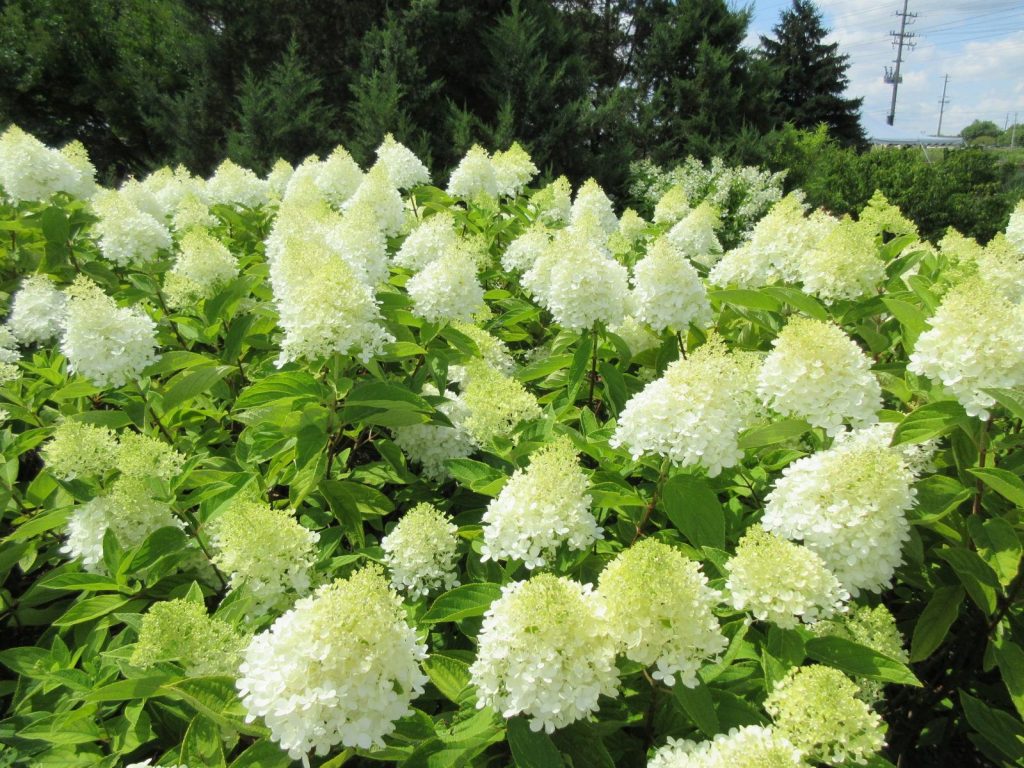
Hydrangea magic sweet summer
- In the period from late May to mid-June, fertilize with ammonium and potassium sulfate (50 and 15 g per 10 l of water), as well as superphosphate (25 g per bucket of water). 30 liters of working fluid are poured under one bush. These components increase immunity against diseases, improve the quality and duration of flowering.
- At the budding stage, you can add a solution of 60 g of superphosphate and 40 g of potassium sulfate to a bucket of water.
- In addition to nutrition, abundant and regular soil moisture is required. 30 liters are poured under each bush, the frequency depends on the condition of the earth and precipitation.
Resting phase
After the end of flowering, it is necessary to cut off all dried inflorescences, which only take away the strength and energy from the shrub.
During this period of life, the hydrangea is stopped feeding. Also, watering is reduced - to once every three weeks. Under such conditions, the plant will be able to gain strength for the next year.
Preparing for winter
This is one of the important steps in caring for the magik sweet summer panicle hydrangea. Despite good frost resistance, young plants have weak immunity, so they can easily freeze over the winter. Up to three years they need to be insulated.
After the autumn pruning, the lower part of the branches is whitewashed with slaked lime to protect against parasites and diseases.
The near-trunk zone is mulched with peat or humus. Then the twigs are tied into a bundle with twine or rope, bent to the ground, and fixed with staples. Sprinkle on top with fallen leaves or cover with spruce branches. To prevent the shelter from being blown away by the wind, sheets of slate are placed on top.
Reproduction methods
There are several breeding options for an ornamental perennial, each with pros and cons.
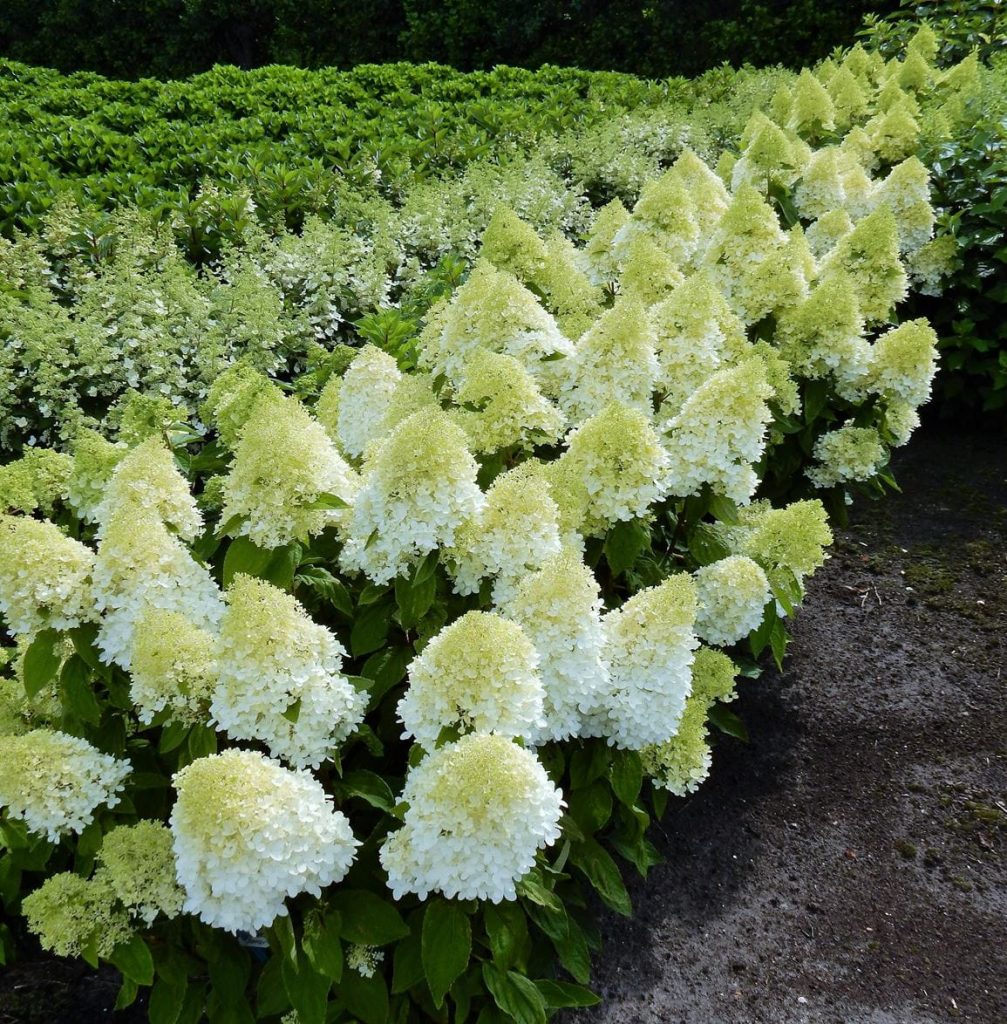
Hydrangea magical sweet summer photo
Layers
This procedure is carried out in early autumn. An adult bush is taken from the age of 5 years. They choose the longest and most flexible shoot on it, free it from foliage.
In the area of the near-trunk circle, a trench is dug out with a depth of 6-7 cm, sprinkled with a mixture of peat and coarse sand. Lay the twig in a horizontal position, fix it with staples, fill in the remaining soil mixture, moisten.
2 weeks before the first frost, sprinkle with a thick layer of peat earth or humus to protect the layers from freezing.
In the spring, as soon as the snow thaws and the threat of recurrent cold weather has passed, the stem is dug up, cut off from the mother bush. Divided into several parts with roots, seated in a permanent habitat in the garden.
By dividing the root
This propagation option is suitable for old plants that require rejuvenation. Usually these are bushes that have stopped growing, bloom poorly and have lost their original decorative effect.
The plant is watered abundantly, dug in, removed and, together with an earthen clod, lowered into a container of water to wash off the remains of the soil. The dried roots are cut into pieces with a garden shovel. Each delenka must have at least one shoot and several roots.
Places of cuts are sprinkled with charcoal, after which they are seated separately, maintaining the above-described planting scheme.
Cuttings
For propagation of paniculate hydrangea of this variety, root cuttings are taken - they quickly take root and take root well after planting.
They are procured in February-March. Shoots with 2-4 buds are cut. They are planted in seedling boxes filled with coniferous soil to a depth of 2-3 cm. Watered, placed in a warm and well-lit place. It is not necessary to cover with foil, since this can contribute to their rotting.
After about 2-2.5 weeks, they will release the roots, after a month of home growing, they are planted separately.
Diseases and pests
This decorative culture has several infections and parasites, which lead not only to the loss of decorativeness, but also to death:
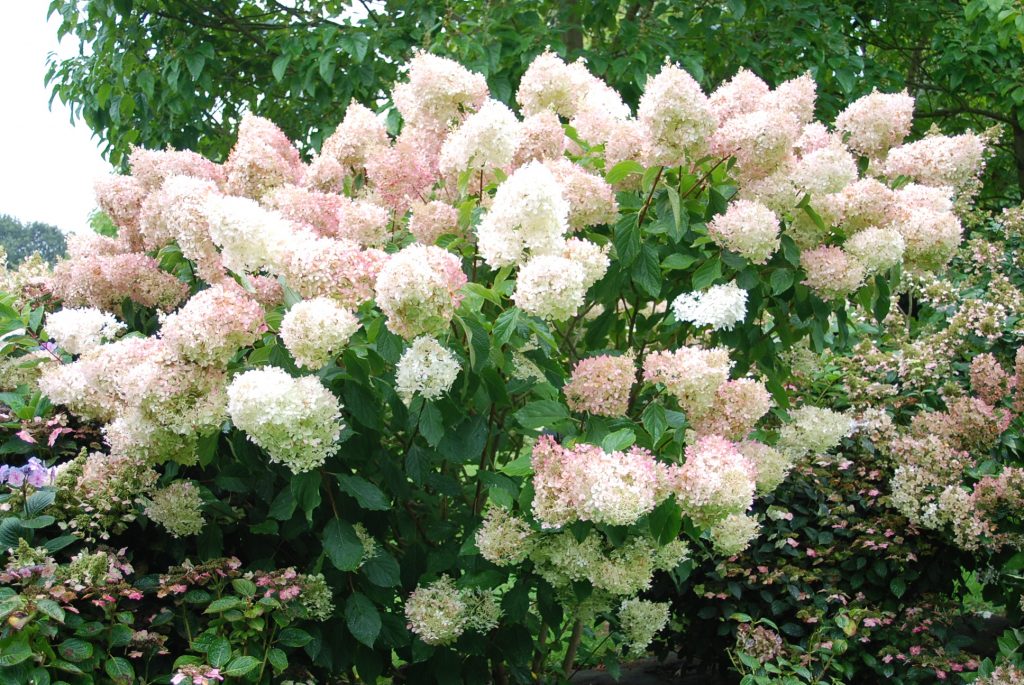
Hydrangea paniculata magical sweet summer
- Downy mildew. Signs - the appearance of shiny oily spots on the surface of the foliage. Over time, they darken, the diseased parts die off. You can save the hydrangea if you remove all damaged areas in time and treat it with a solution - for 10 liters of water, 15 g of copper sulfate or 150 g of green soap. Irrigation is carried out in dry weather in the morning or evening.
- Chlorosis. This sore damages shrubs growing in soil with a high content of humus or lime. Symptoms - the leaves begin to fade, yellowish streaks appear on their surface.To restore the plant, you need to treat the crown with a solution of potassium nitrate (40 g per bucket of water). After three days, spray with iron sulfate in the same dosage.
- Spider mite. This insect begins to appear in extreme heat and drought. It feeds on the sap of the foliage, as a result of which it becomes covered with a marble pattern, turns yellow. Thiofos is used to fight. 7 g of the substance is dissolved in 10 l of water. Irrigate in dry and calm weather. For prevention, it is often necessary to spray the crown with warm water.
- Aphid. Damages young seedlings - it feeds on sap of leaves, buds, young growth. Anabisin sulfate solution (20 g per bucket of water) will help get rid of the parasite.
For prevention, it is recommended to buy healthy shrubs, water them regularly, feed them and cut off non-viable parts. It is also important to constantly loosen the soil, avoid thickening of the plantings, and remove weeds in time.
Landscape use
Hydrangea paniculata Magic Sweet Summer is of great value in the modern landscape:
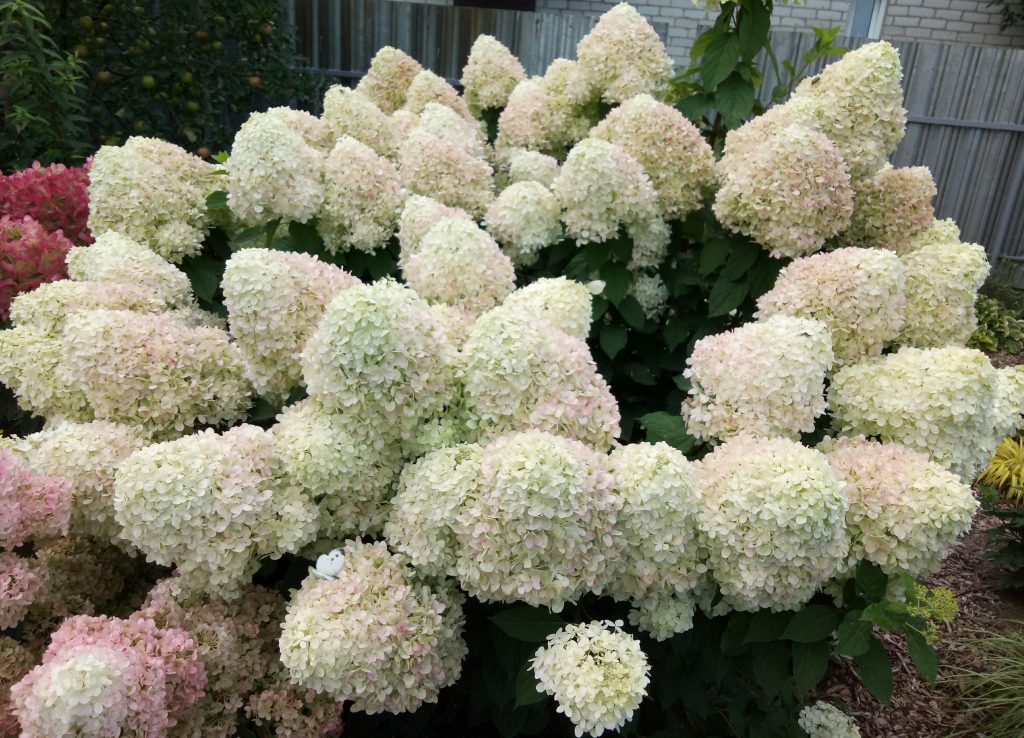
Hydrangea paniculata hydrangea paniculata magical sweet summer
- it is planted singly in flower beds, near gazebos, terraces;
- used in group plantings with other decorative flowering perennials;
- several bushes are planted along alleys, fences, creating a lush and bright hedge;
- goes well with junipers, fir.
Testimonials
This unpretentious culture has received many positive reviews from gardeners:
- tolerates severe frosts well, therefore, in adulthood, it does not need insulation;
- suitable for creating different forms of the crown, which allows you to give it a compact and original look;
- blooms long and luxuriantly, so you can enjoy its beauty until late autumn.

